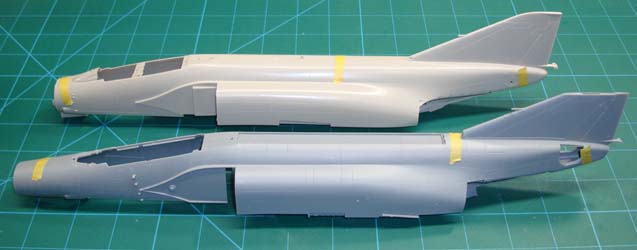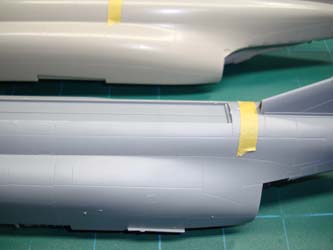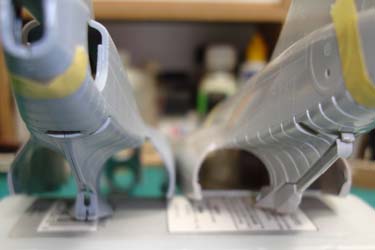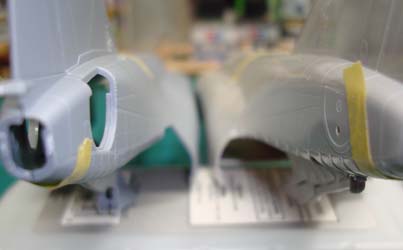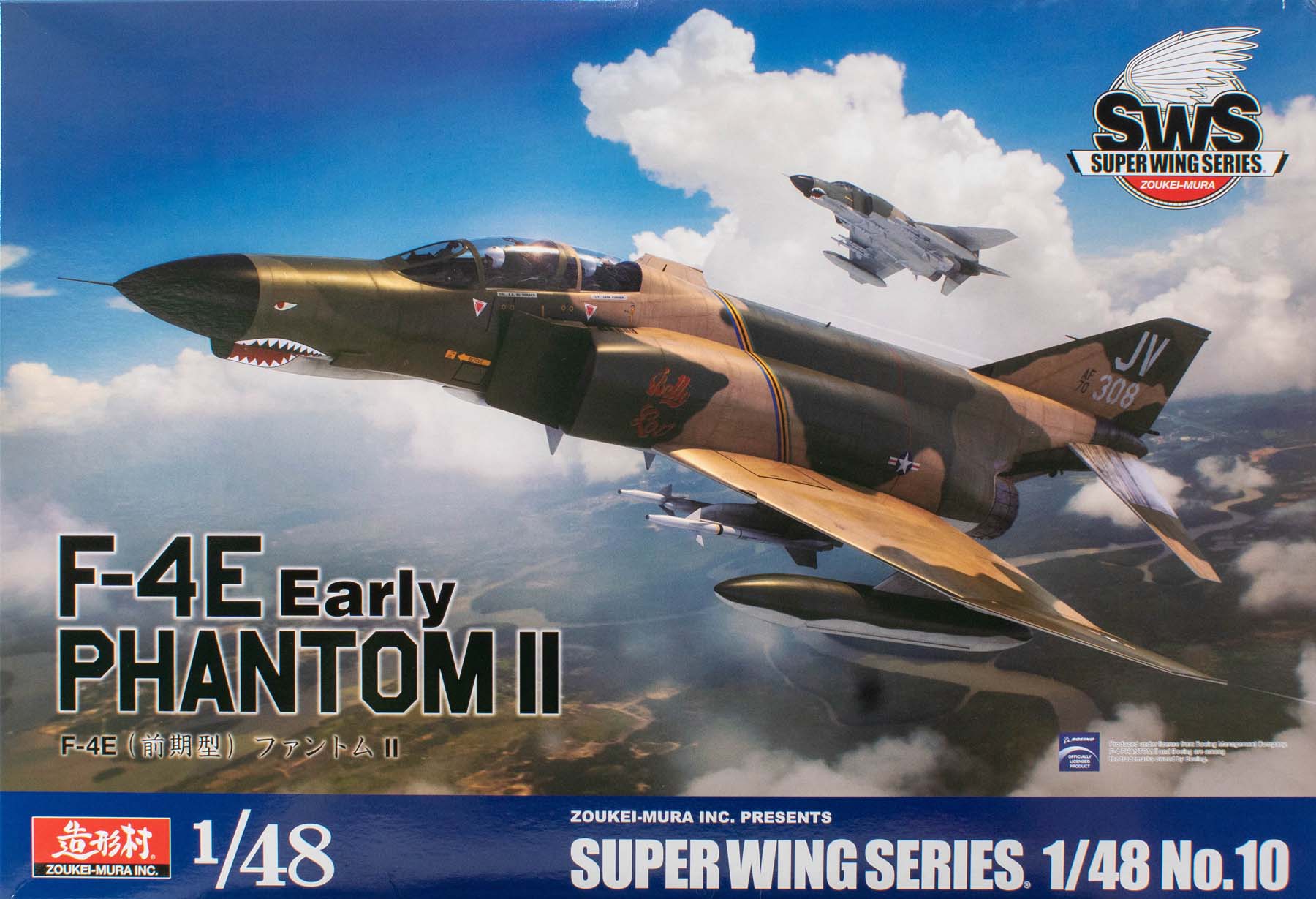
Zoukei-Mura Inc. 1/48 F-4E (early) Phantom II Kit First Look
By Michael Benolkin
| Date of Review | October 2020 | Manufacturer | Zoukei-Mura Inc. |
|---|---|---|---|
| Subject | F-4E (early) Phantom II | Scale | 1/48 |
| Kit Number | 48010 | Primary Media | Styrene |
| Pros | Beautiful molding, excellent detail, corrected rear fuselage | Cons | Nothing noted |
| Skill Level | Experienced | MSRP (USD) | $75.00 |
First Look
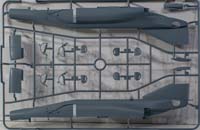 |
 |
 |
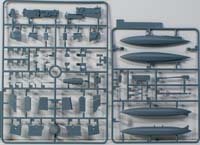 |
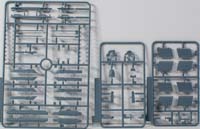 |
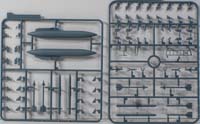 |
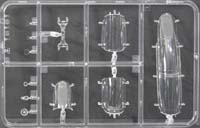 |
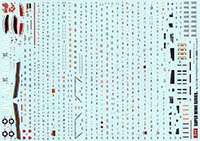 |
When the F-4 Phantom II was first designed, it was one of the first aircraft to follow a new air combat philosophy that with guided missiles, guns were obsolete. As the Air Force, Navy, and Marines took the F-4 into combat, they realized quickly that this new philosophy was nothing more than bovine scat. In aerial combat, you can find yourself inside minimum launch range for both the AIM-7 and AIM-9 leaving one armed with only rude gestures. If your opponent was flying the MiG-17 however, they were still armed with cannons and close-in combat was very one-sided. Before long, F-4s flying CAP (combat air patrol) traded their centerline tanks for a 20mm gun pod. The problem with the pod was that between vibrations and aerodynamic forces on the pod, wherever you pointed the gunsight pipper was going to be the only place the gun wasn't going to hit. Pilots tended to 'walk the rudders' to spray the area around the MiG in order to score hits. To get more consistent hits on target, the Phantom needed an internal gun. McDonnell Douglas had already developed a long-nose design for the Phantom for the RF-4B/RF-4C, so they fitted a long nose on an F-4C/D and began working how to fit the M61 Vulcan as well a radar into that tight space. The solution was soon worked out and several prototypes were flown before the Air Force would adopt the design as the F-4E.
It has been a year since Zoukei-Mura's Inc. delivered their last Phantom kit with another F-4J, and many folks were excited to learn that they were beginning the long-nosed Phantoms next. Here is their first installment with an early F-4E and this is due to be followed-up in a month or so with a special edition F-4EJ Kai. I've had a few emails asking about what the differences are between an early, mid, and late F-4E. From a production point of view, you could consider the E-models (blocks 31-47) as 'early' production as they all featured the blown leading edge flaps from the earlier Phantoms. By definition, each individual production block introduced improvements and updates, but the visible differences between the early blocks was very minor. The late production F-4E began with block 48 and ran through block 67 and the initial difference was the introduction of the ASX-1 TISEO sensor mounted to the left inboard wing leading edge and the ARN-101 which had a distinctive antenna on the dorsal spine. It was also in block 48 that the slatted wing was also introduced, but several airframes were produced without slats. The slats replaced the engine-blown leading edge flaps and gave the F-4E greater maneuverability. Further improvements were made through the end off production though many of airframes were retro-fitted to earlier blocks including slat kits, the F-15 600-gallon centerline tank, chaff/flare launchers on the inboard pylons, smokeless J79 engines, and more. Some F-4Es were even fitted with the frameless F-15 windscreen.
The kit is molded in gray styrene and presented on 14 parts trees plus one tree of clear parts. Among the features and options:
- Beautiful front and rear cockpits
- Stick, throttles and even canopy lock handles provided
- Detailed Martin Baker ejection seats (no crew restraints provided)
- Canopy can be posed in open or closed positions
- Detailed canopy frames
- One-piece canopy provided for closed option
- Nicely detailed J79 engines
- Optional engine stand provided
- Intake ducts to the compressor faces
- Intakes include pitots
- Exhaust nozzles provided in open and closed positions
- Detailed wheel wells and landing gear
- Choice of normal or raised (take-off) nosegear strut
- Leading and trailing edge flaps can be posed up or down
- Ailerons molded separately and can be depicted in neutral (flight) or drooped (flaps down) position
- Stabilators can be posed in your choice of three positions
- Tail hook molded separately but depicted in up/stowed position
- Speed brakes can be posed open or closed
- Ventral aux air doors can be posed open or closed
- Choice of stowable boarding ladder or larger boarding ladder (or none)
External stores include:
- 4 x AIM-7E Sparrow
- 4 x AIM-9E/J Sidewinder
- 2 x 370 gallon external tanks
- 1 x 600 gallon centerline tank
- 2 x TER
- 2 x MER
Decals are provided for one subject:
- F-4E-35-MC, 67-0308, 469 TFS/388 TFW, Ubon RTAFB, 'Betty Lou'
The decal sheet is printed by Cartograf and provides an extensive set of markings and stencils for the airframe and weapons.
Notes:
- If you've been following the evolution of these F-4 kits from Zoukei-Mura, you'll immediately notice that they are paying attention to customer feedback. For example, in the last F-4J release, the flaps, aux intake doors, and speed brakes were set up for only one pose, but this kit offers these details in open or closed poses. The stabilators have three position options, and even the J79 nozzles are now provided open and closed.
- This kit has parts for future variants that are not used in this build. The instructions show all of the 'spares' that are not used in this build though I'm not surprised that the slatted options are not here since that takes a different wing.
- This kit is set up primarily for air-to-air though the kit does include the multiple ejector racks (MERs) and triple ejector racks (TERs) should you want to bomb up your build (BYOB - bring your own bombs).
- I still like the single-piece canopy as this is ideal for me as a cockpit mask while I later install the open canopy segments.
Update: As I noted above, Zoukei-Mura Inc. does listen to its customers. When they designed the new fuselage for the long-nosed Phantoms, they sought out expert help to get the shape of the rear fuselage correct. I heard from Andreas Klein, author and publisher of multiple definitive Phantom studies under his AirDOC/Double Ugly! banner, and Zoukei-Mura sought out his help. In turn, he obtained copies of the McDonnell Douglas blueprints/loftline drawings for the F-4E from the Greater St. Louis Air and Space Museum. If you look at the drawing below compared to the photos below, they did indeed get the rear fuselage correct.
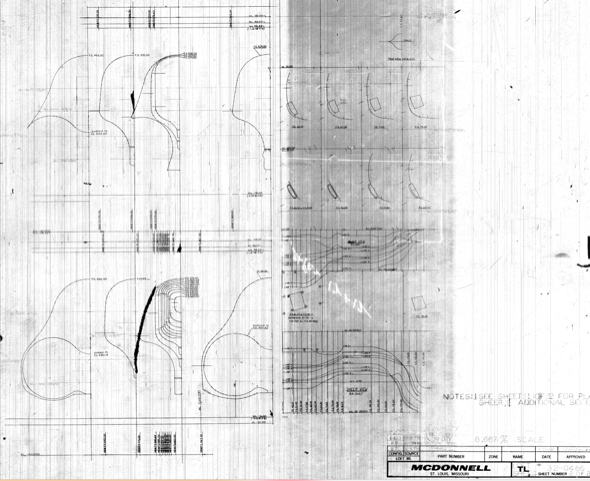
In the photos above, the Hasegawa F-4E taped together (light gray) alongside the Z-M F-4E (dark gray). For years, we held many of the Hasegawa kits as the 'gold standard' by which new kits would be judged. As we discovered with the Academy 1/48 short-nosed Phantoms, Academy had corrected the shape of the nose, and after a heated debate online, the experts finally agreed that the Hasegawa kit was wrong. Here we are again, and differences in shape of the Zoukei-Mura rear fuselage, in conjunction with the drawings, highlight another bad accuracy assumption with the Hasegawa F-4E.
Given the design and details in this kit, the Zoukei-Mura F-4E is the best kit of the Phantom they've produced to date and my choice for best Phantom kit in any scale (less than 1:1).
My sincere thanks to Zoukei-Mura Inc. for this review sample!
Here is a list of paints Zoukei-Mura identifies for use with this kit and their equivalent colors from other brands:
H002
N002
B125
C125
A012
36107
X01
H008
N008
B003
C003
36190
LP11
X11
H012
N012
B041
C041
XF01
H018
N018
36191
X10
H078
N078
36146
H090
N090
X27
H093
N093
X23
H303
B021
C021
XA1116
H309
B016
C016
XF65
H310
B012
C012
H311
B039
C039
H316
B049
C049
A062
H317
B044
C044
H327
B219
C219
H329
B066
C066








